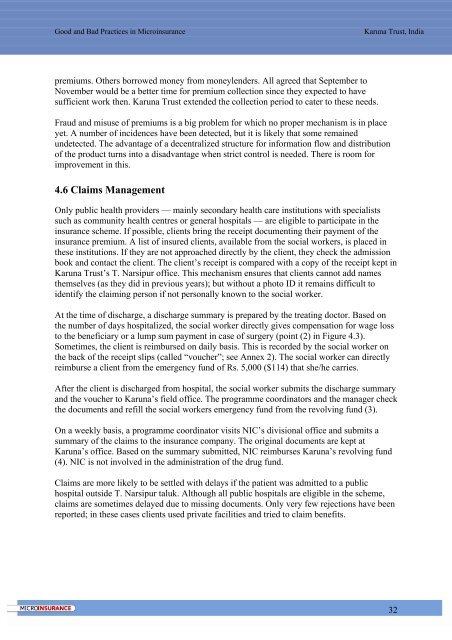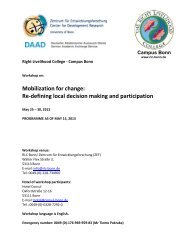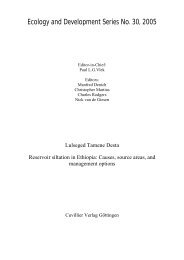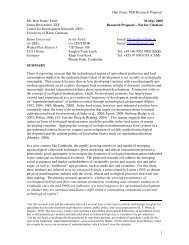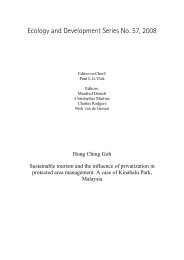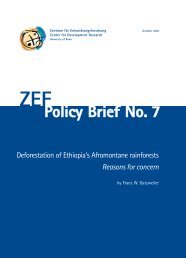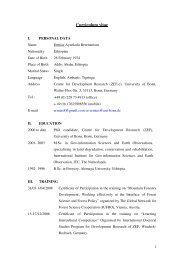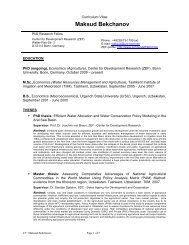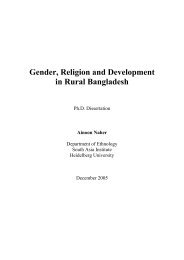Karuna Trust, Karnataka - ZEF
Karuna Trust, Karnataka - ZEF
Karuna Trust, Karnataka - ZEF
You also want an ePaper? Increase the reach of your titles
YUMPU automatically turns print PDFs into web optimized ePapers that Google loves.
Good and Bad Practices in Microinsurance<strong>Karuna</strong> <strong>Trust</strong>, Indiapremiums. Others borrowed money from moneylenders. All agreed that September toNovember would be a better time for premium collection since they expected to havesufficient work then. <strong>Karuna</strong> <strong>Trust</strong> extended the collection period to cater to these needs.Fraud and misuse of premiums is a big problem for which no proper mechanism is in placeyet. A number of incidences have been detected, but it is likely that some remainedundetected. The advantage of a decentralized structure for information flow and distributionof the product turns into a disadvantage when strict control is needed. There is room forimprovement in this.4.6 Claims ManagementOnly public health providers — mainly secondary health care institutions with specialistssuch as community health centres or general hospitals — are eligible to participate in theinsurance scheme. If possible, clients bring the receipt documenting their payment of theinsurance premium. A list of insured clients, available from the social workers, is placed inthese institutions. If they are not approached directly by the client, they check the admissionbook and contact the client. The client’s receipt is compared with a copy of the receipt kept in<strong>Karuna</strong> <strong>Trust</strong>’s T. Narsipur office. This mechanism ensures that clients cannot add namesthemselves (as they did in previous years); but without a photo ID it remains difficult toidentify the claiming person if not personally known to the social worker.At the time of discharge, a discharge summary is prepared by the treating doctor. Based onthe number of days hospitalized, the social worker directly gives compensation for wage lossto the beneficiary or a lump sum payment in case of surgery (point (2) in Figure 4.3).Sometimes, the client is reimbursed on daily basis. This is recorded by the social worker onthe back of the receipt slips (called “voucher”; see Annex 2). The social worker can directlyreimburse a client from the emergency fund of Rs. 5,000 ($114) that she/he carries.After the client is discharged from hospital, the social worker submits the discharge summaryand the voucher to <strong>Karuna</strong>’s field office. The programme coordinators and the manager checkthe documents and refill the social workers emergency fund from the revolving fund (3).On a weekly basis, a programme coordinator visits NIC’s divisional office and submits asummary of the claims to the insurance company. The original documents are kept at<strong>Karuna</strong>’s office. Based on the summary submitted, NIC reimburses <strong>Karuna</strong>’s revolving fund(4). NIC is not involved in the administration of the drug fund.Claims are more likely to be settled with delays if the patient was admitted to a publichospital outside T. Narsipur taluk. Although all public hospitals are eligible in the scheme,claims are sometimes delayed due to missing documents. Only very few rejections have beenreported; in these cases clients used private facilities and tried to claim benefits.32


